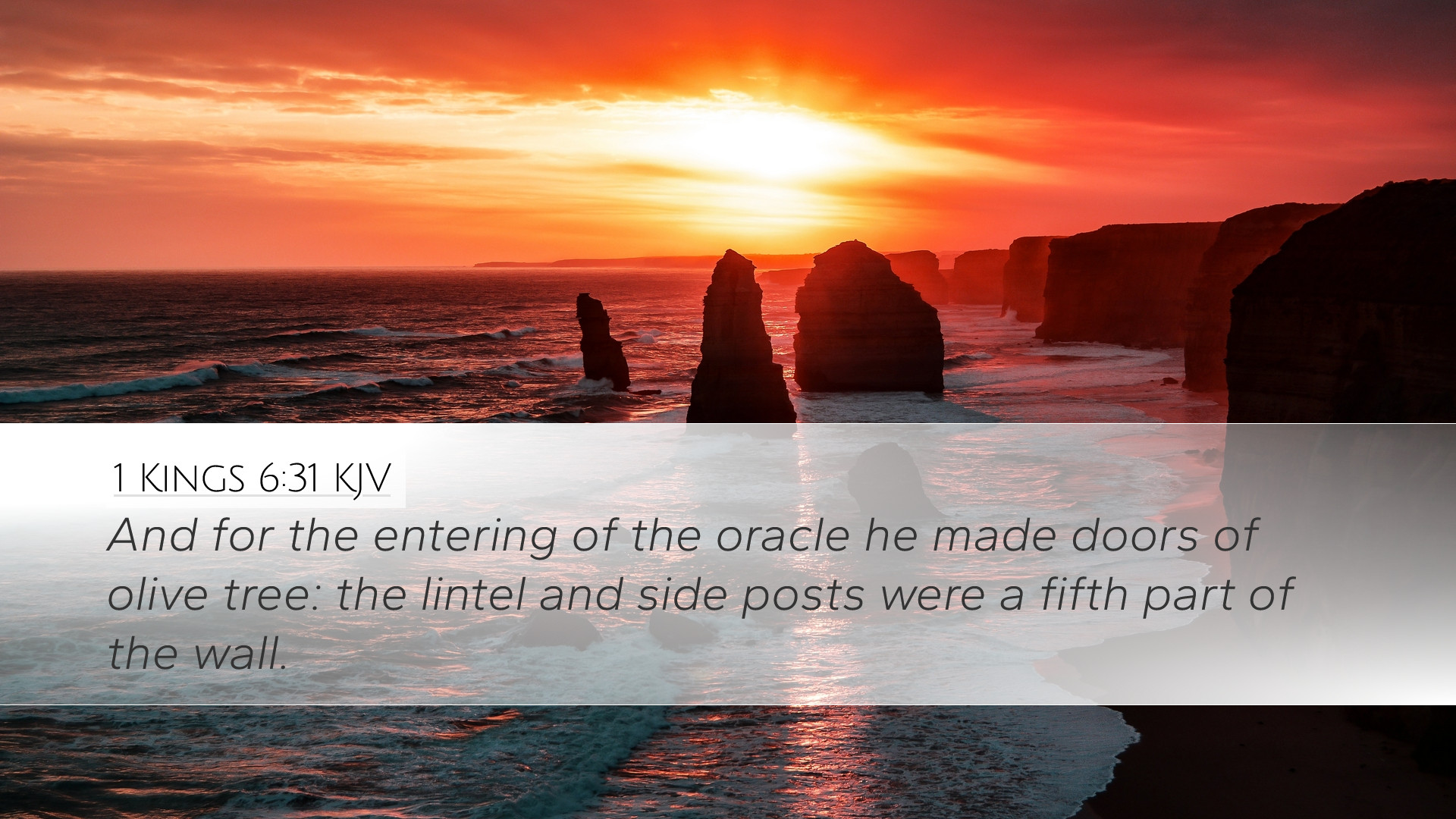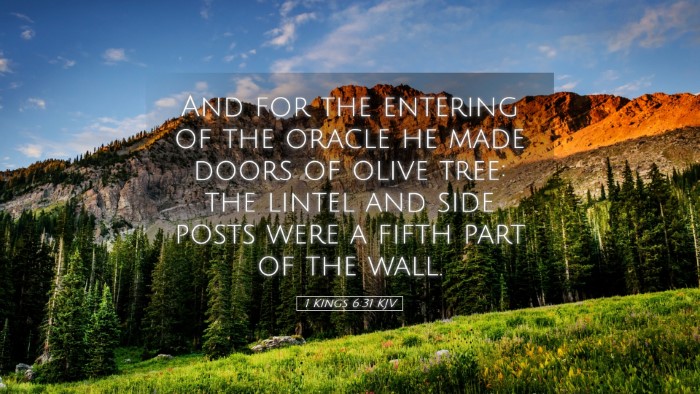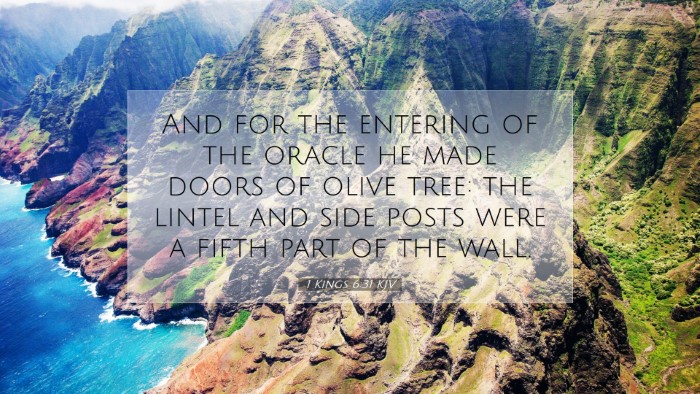Commentary on 1 Kings 6:31
Verse Context: The verse states, “And for the entering of the sanctuary, he made doors of olive tree; the posts were a fifth part of the wall.” This detail is nestled within the rich narrative of Solomon's temple construction, which symbolizes God's dwelling among His people.
Historical and Theological Significance
The building of the temple is a pivotal moment, marking a shift from the portable worship of the tabernacle to a permanent and grand place of worship. It signifies God's choice of Jerusalem as the central location for worship, representing His covenant with Israel.
Insights from Commentaries
Matthew Henry's Commentary
Matthew Henry posits that the choice of olive wood for the doors not only symbolizes beauty and durability but also the richness of God’s blessings. Olive trees were prized in ancient Israel for their oil, symbolizing the presence of the Holy Spirit.
- Symbolism of Olive Tree: Olive oil was integral to rituals, indicating purity and anointing. Henry’s reflection suggests that the choice of materials embodies the holiness required for divine worship.
- Spiritual Entrance: The doors represent a gateway to communion with God. Just as the doors separate the sacred from the secular, they also invite believers into a deeper relationship with the divine.
Albert Barnes' Notes
Albert Barnes provides additional insight regarding the architectural aspects of the temple. He notes that the olive wood doors were not merely functional but designed to be ornate and evocative of the splendor of God’s house.
- Intricacy and Structure: Barnes emphasizes the skill involved in crafting these doors, drawing attention to the overall glorious design of the temple that reflects the meticulous nature of God’s creation.
- Faith and Worship: The grandeur of the temple fosters a spirit of reverence among worshippers, encouraging them to approach God with awe and respect—a sentiment echoed throughout the biblical narrative.
Adam Clarke's Commentary
Adam Clarke highlights not only the physical aspect of the doors but also notes their spiritual implications. He suggests that doors often represent opportunities for fellowship with God.
- Gateway to Worship: Clarke interprets the doors as a representation of Jesus as the door of the sheep; access to God is through Him. This insight serves as a reminder of the New Covenant.
- Lessons in Worship: The emphasis on quality in the doors signifies the importance of bringing our best to God in worship and service, an enduring principle applicable in both the Old and New Testaments.
Theological Reflections
The doors of the temple suggest a theology of entrance and access, illustrating that God desires His people to approach Him. They signify not just a physical barrier but a sacred threshold into divine presence.
Parallels in Scriptural Narrative
The construction of the temple and its features, including the doors, can be likened to various elements throughout Scripture, including:
- Doors in the New Testament: The imagery of doors appears in the New Testament where Jesus proclaims, "I am the door" (John 10:9), emphasizing the theme of access to salvation and relationship with God.
- The Tabernacle Comparison: The transition from the tabernacle, with its intricate curtains, to the temple with its formal doors reflects a progression in God’s dwelling with His people, emphasizing permanence and stability in worship.
Conclusion
1 Kings 6:31 serves as a powerful reminder of God’s desire to dwell among His people and the importance of approaching Him with reverence. Through the insights of Matthew Henry, Albert Barnes, and Adam Clarke, we see the doors as more than mere entrances; they are rich in symbolism, pointing to theological truths about access to God, the necessity of holiness, and the beauty of divine worship.
As individuals engage with this scripture, they are encouraged to reflect on their own entrances to spiritual worship. What doors do they open in their lives that lead them deeper into communion with God? Thus, drawing near to the divine presence relies not only on physical spaces but also on the posture of the heart.


